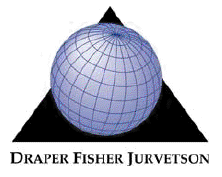Team:Stanford
From 2010.igem.org

| Home | Project | Applications | Modeling | Parts | Team | Notebook |
Contents |
Welcome to the Stanford team Wiki for iGEM 2010
Stanford iGEM is a student-run, faculty-directed research group at Stanford University. The objective of our interdisciplinary group is to design and build novel engineered biological systems using standardized DNA-based parts to submit to the iGEM (International Genetically Engineered Machines) competition, held annually at MIT. Our research draws from the principles of synthetic biology, an emerging interdisciplinary and multidisciplinary area that involves the design and construction of biological systems. Here is our team for the 2010 competition and our [http://igem.stanford.edu/ page] on the Stanford University Website.
If you are looking for our winning 2009 project, check out our old site.
Our Project: EscheRatio Coli
The field of synthetic biology is in the process of a rapid expansion. As more and more researchers join the burgeoning discipline, they will need new biological tools. This year our team created a new type of tool for the synthetic biologist's toolkit: a system to allow E. coli to sense the ratio of two different chemicals in its environment and produce a protein output based on that ratio. Our new sensors will allow synthetic biologists to explore novel application areas beyond the limits of current sensors. While designing these new tools, we asked ourselves critical design questions. We invite you to follow along in our decision process.
Why Ratios?
Ratios run the biological world, but can be quite difficult to measure with current techniques.
With the Stanford 2010 team's ratio sensors, synthetic biologists will be able to create more responsive genetic machinery capable of solving all sorts of problems. Why not take a look at a few examples on our Applications page?
Why Two Designs?
Our team engineered two different ratio sensing systems because we believe that one type of ratio sensor simply wouldn't be effective across the wide range of applications we envision. In some cases, only one ratio may be important, and the sensor should be able to clearly delineate whether or not the ratio has passed that threshold. For example, detecting if a biologically significant event has occurred. In other cases, researchers may want their bacteria to respond with greater nuance to the chemical environment, or simply report on the state of that environment. In this case, a sensor capable of responding over a range of possible ratios would be more useful.
In order to satisfy these two needs, our team created:
An sRNA-based sensor that reports the relationship between the present ratio of the chemicals and a single desired ratio via the presence or absence of signal.
The two input chemicals each bind to a receiver upstream of an sRNA and a reporter protein. Each sRNA is complementary to a specific RSID that includes the RBS of the opposite reporter protein. When the sRNA's bind to their target RSID sequences, they cover the RBS, preventing the translation of the reporter protein. The sRNA/reporter protein pair that received the greater stimulus from the environment wins out over the other reporter protein and determines the cell's output. Note that in place of a reporter protein, our system can be hooked up to any biological part.
A kinase-phosphatase sensor that reports the exact ratio via the intensity of the signal
Twitter Project
Our team also created an iGEM 2010 list on Twitter to allow teams to help each other solve lab problems and share ideas. Check out our story here.
Acknowledgements
The following individuals have played an instrumental role in the success of our iGEM team. We would like to extend our heartfelt appreciation to the following faculty, postdocs and graduate students:
Faculty Sponsors
- Drew Endy
- Christina Smolke
Post Graduate/Graduate Student Mentors
- Graham Anderson
- Ryan Bloom
- Jerome Bonnet
- Andy Chang
- Annie Hazlehurst
- Ying Lei
- Francois St. Pierre
- Ariane Tom
- Isis Trenchard
- Christopher VanLang
- Rayka Yokoo
- Bo Zhou
Executive Director
- Anusuya Ramasubramanian
Sponsors
- [http://bioengineering.stanford.edu/ Stanford University Department of Bioengineering]
- [http://biox.stanford.edu/ Stanford BioX Initiative]
- [http://www.stanford.edu/dept/undergrad/cgi-bin/drupal/ Stanford University Vice Provost for Undergraduate Education]
- [http://www.dfj.com/ Draper Fisher Jurvetson Venture Group]
 "
"




